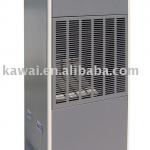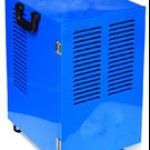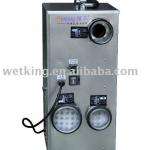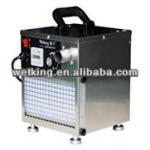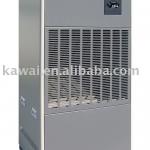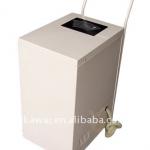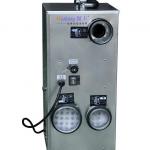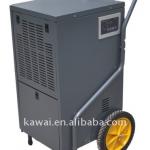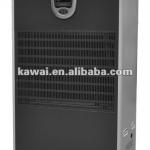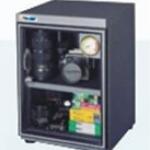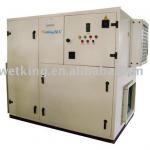heat pump dryer heating/cooling drying
| Type:Dehumidifier | Place of Origin:Guangdong China (Mainland) | Brand Name:KINKAI | Model Number:JK06RD |
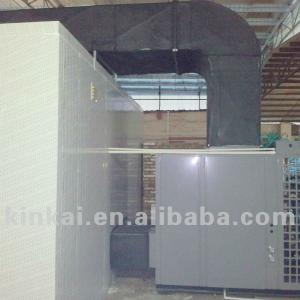
1. heat pump drying machine
2.supply max air temperature 80'C
3. suitable for bake wood, tobacco, fruit, tea leaf, food
4. a new environment-friendly, energy-saving product developed specifically for the drying industry
5. An intelligent equipment integrating dehumidification, heating, cooling, moisture discharge and ventilation
6. Using the closed type dehumidification and heat pump drying method, energy-saving and emission-reduction; with closed type drying, each drying room reduces coal combustion of above 80kg every day, thus significantly reduces SO2 and CO2 emission;
7. Using the principle of heat pump for heat recovery from vapor condensation, no waste heat emission, saving operating cost; saving energy by over 30% more than intensive drying rooms and over 75% more than vertical type drying rooms;
8. Using closed type drying, no contact with external air, good drying quality, high yield, good color and luster and high grade of tobacco products, improved price of dry tobacco;
9. Not subject to temperature and humidity in external environment, suitable for use in different regions;
10. Using medium-high temperature refrigerant, with air temperature of drying cabinet up to 70’C (or 80’C), to meet the temperature requirement of tobacco drying;
11. Conventionally, materials are dried either in the field (sun drying) or using high temperature dryers (electric, gas fired, etc.). Successful outdoor drying depends upon good weather and indeterminate weather can render a product worthless. High temperature drying can damage the nutrient content and impart an unpleasant smell to the dried product. Specialty crops such as ginseng, herbs, echinacea, etc., need to be dried at low temperatures (30 - 45oC) for product quality optimization. This is an important consideration as they have a relatively high commercial value. Heating ambient air to use for drying, although a simple cost-effective procedure, is of limited application, particularly at higher ambient air relative humidities because of the low allowable maximum temperature conditions. Under high ambient moist air conditions, it may not even be possible to dry the material by conventional means. High temperature drying deteriorates the material structure and can render it unsuitable for further use. Low temperature drying of specialty crops reduces the risk of loss in nutrient content and damage to physical properties. Drying system incorporating a dehumidification cycle have been developed that both conserve energy and handle the material gently. The dryer operates using a heat pump where both sensible and latent heats are recovered from the exhaust air. The heat is then recycled back through the dryer by heating the air entering the dryer. The heat pump drying system is a combination of two sub-systems: a heat pump and a dryer. The heat pump operates according to a basic air conditioning cycle involving four main components: the evaporator, the compressor, the condenser and the expansion valve. The working fluid (refrigerant) at low pressure is vaporized in the evaporator by heat drawn from the dryer exhaust air. The compressor raises the enthalpy of the working fluid of the heat pump and discharges it as superheated vapor at high-pressure. Heat is removed from the working fluid and returned to the process air at the condenser. The working fluid is then throttled to the low-pressure line (using an expansion valve) and enters the evaporator to complete the cycle. In the dryer system, hot and dry air at the exit of condenser is allowed to pass through the drying chamber where it gains latent heat from the material. The humid air at dryer exit then passes through the evaporator where condensation of moisture occurs as the air goes below dew point temperature. A performance study of a heat pump dryer system is required to fully understand its operating characteristics based on different materials to be dried. To accomplish this objective, the project was divided into three tasks (steps). Task A is concerned with the design and construction of a prototype heat pump dryer system. Task B involves field-testing of a prototype system using specialty crops or material with similar characteristics. Finally, task C is to develop a comprehensive computer model using the fundamentals of thermodynamics for a heat pump dryer system and to determine its accuracy compared to experimental results.

| Packaging Detail:plywood |
| Delivery Detail:20days |



